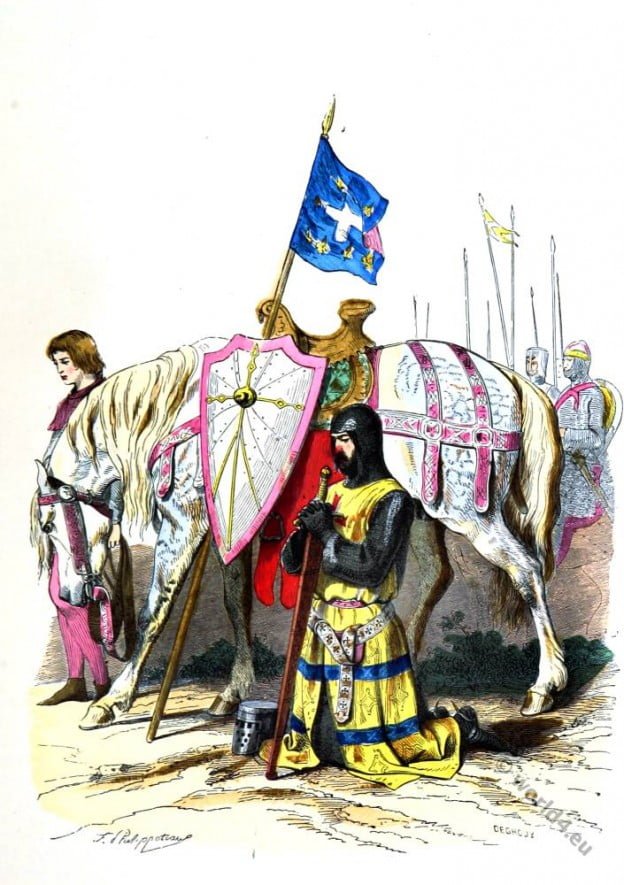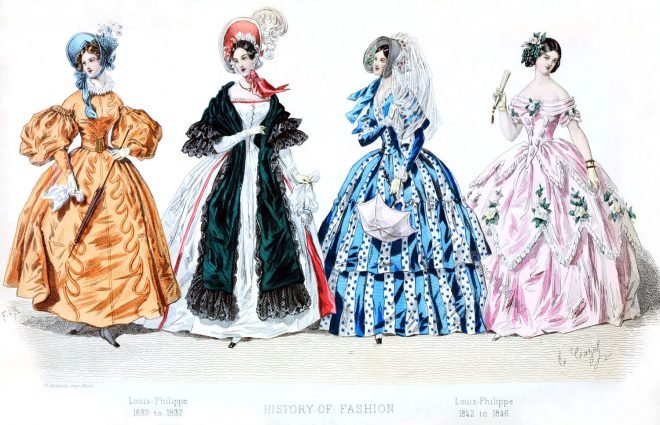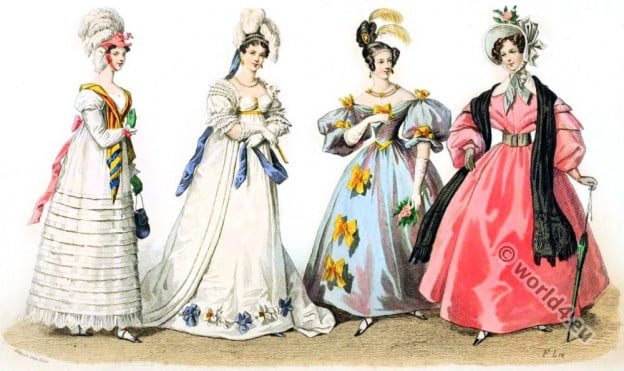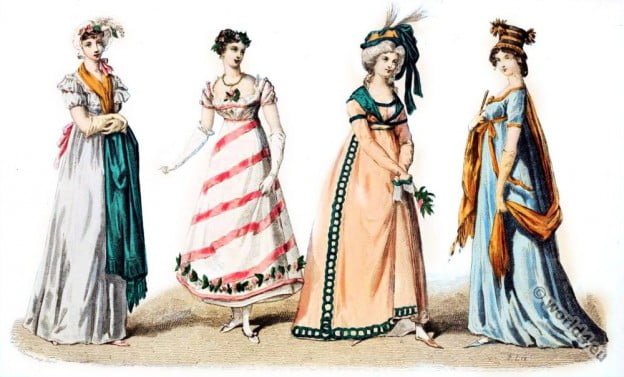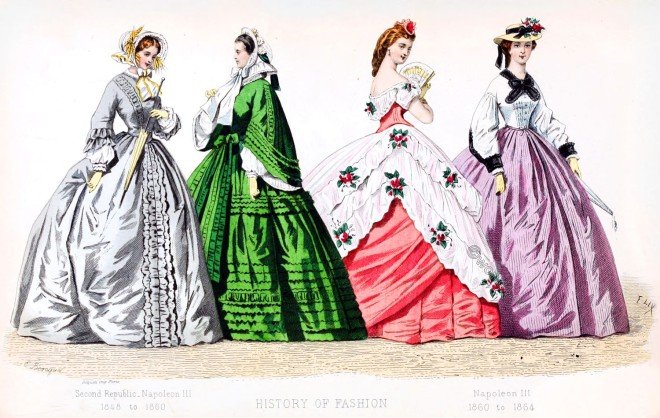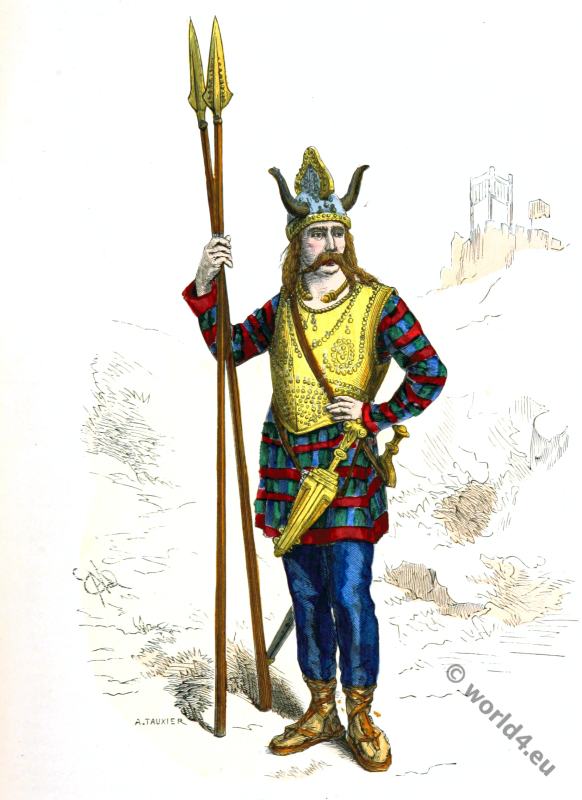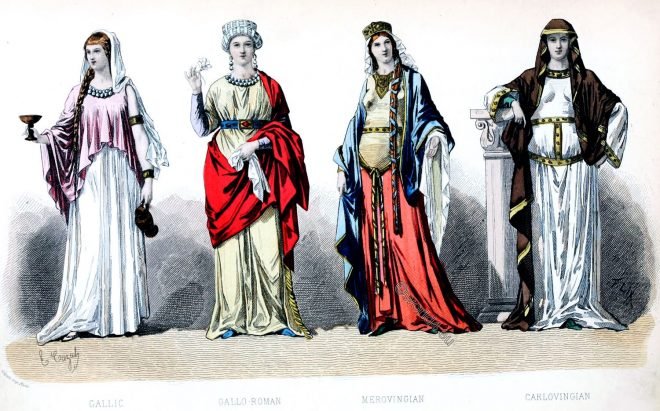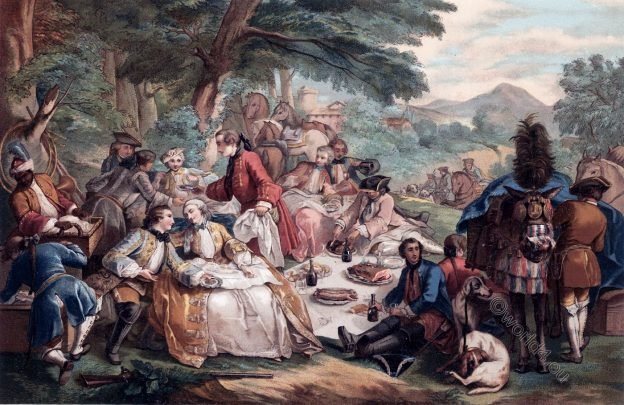Knight bannert praying before his departure for the 2nd crusade.
Tag: Augustin Challamel
(Jean Baptiste Marie) Augustin Challamel (1818–1894). French historian. Books: Costumes civils et militaires des Français à travers les siècles. 1883. The History of female fashion in France. 1874.
Noble woman dress of the Carolingian period.
Noble woman dress of the Carolingian Period about 890 to 900.
Fashion in the Reign of Louis-Philippe. 1830 to 1848.
The Revolution of July, 1830 — Fashions in Louis Philippe’s reign — Microscopical bonnets, called “bibis,” “cabriolets” — Variety of caps — Fashions of the Middle Ages and of the Renaissance — The stage — Historic costumes — Influence of Rachel, the actress — Greek and Roman fashions — Colours — Various designations of materials — Bedouin sleeves — Bonnets and head-dresses — Pamela bonnets — Novel eccentricities — Taglioni gowns, gathered “4 la Vierge,” laced “à la Niobe,” &c. — The “Sylvestrine” — Costumes to be worn on occasions of attempts on the king’s life — Bouquets for balls.
Fashion in the Reigns of Louis XVIII and Charles X. Restoration.
Importation of foreign fashions in 1815 — White dresses, white feathers, and fleurs de lys — Emigrant ladies — Russian toques — Male and female dressmakers — Ruchings — Short sleeves and long gloves — Herbault’s bonnets — “Chefs” — Anglomania in 1815 — Green gauze veils; spencers — The “canezou”— Lacroix, the stay-maker — Dr. Pelletan and Charles X. — Wasps — The “Ourika” fashions — The famous leg-of-mutton sleeves — Fashions “a l’Ipsiboé,” “au Trocadéro,” and “à la Dame Blanche” — Blonde caps and turbans — Head-dresses — Fashions “à la giraffe;” “the last sigh of Jocko” — Female book-keepers; shopwomen — The Cafe des Mille-Colonnes.
Carolingian Lord going to hunt with bird. 7th century.
Carolingian Lord going to hunt with bird. 7th century.
Fashion history. Reign of Napoleon I. 1804 to 1814.
Fashions under the First Empire. Reign of Napoleon I. 1804 to 1814.
France. Fashion during the Second Republic. 1848 to 1864.
France 19th century. Fashion during the Second Republic. 1848 to 1864. History of Fashion. Girondin mantles. Beaver bonnets. Kasawecks. Summer dresses. Jewellery.
Gallic leader before the Roman conquest.
Gallic leader before the Roman conquest. 1st century. Gaul independent.
The Gallic and Gallo-Roman costume period.
Gallic period—Woad, or the pastel — Tunics and boulgètes — “Mavors” and “Palla” — Cleanliness of the Gallic women — The froth of beer or kourou — The women of Marseilles; their marriage-portions — Gallo-Roman period — The Roman garment — The stola — Refinement of elegance — Extravagant luxury of women — Artificial aids — A vestiaire or wardrobe-room of the period — Shoes — Jewels and ornaments — The amber and crystal ball — Influence of the barbarians.
Fashion in the Reign of Louis XV. The Regency.
Fashion between the Regency of the Duke of Orleans and the reign of Louis XV 1715 to 1774. Both acted on the same motto: “All for pleasure.”

